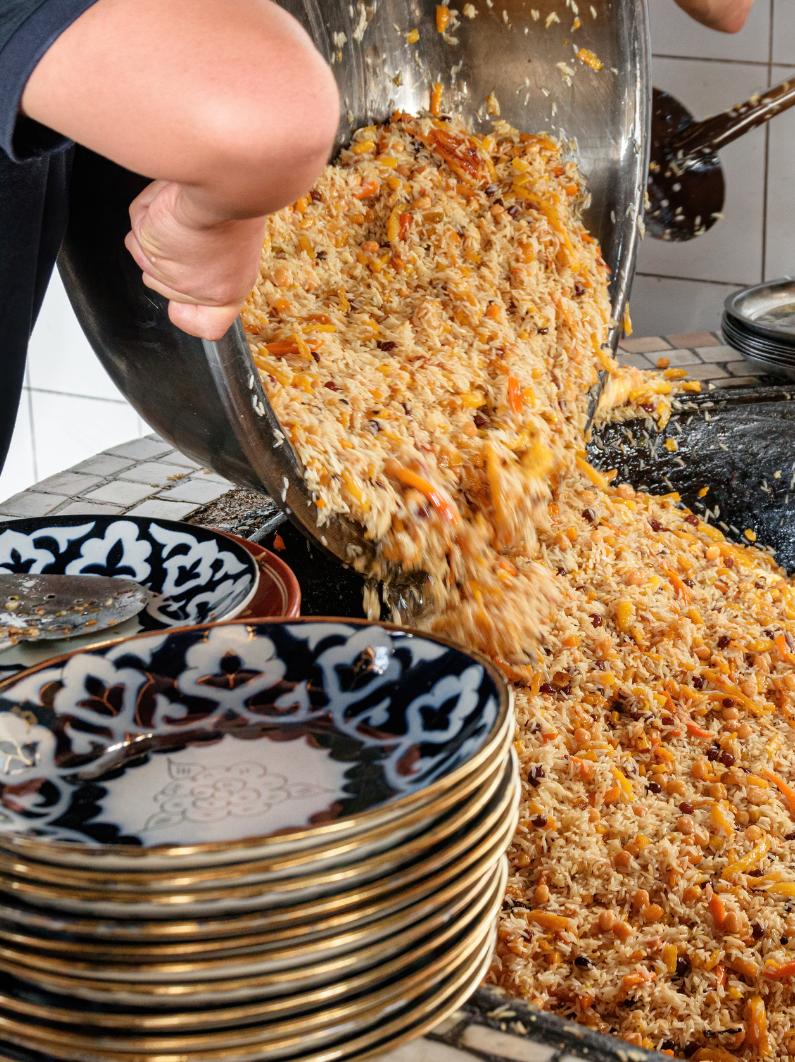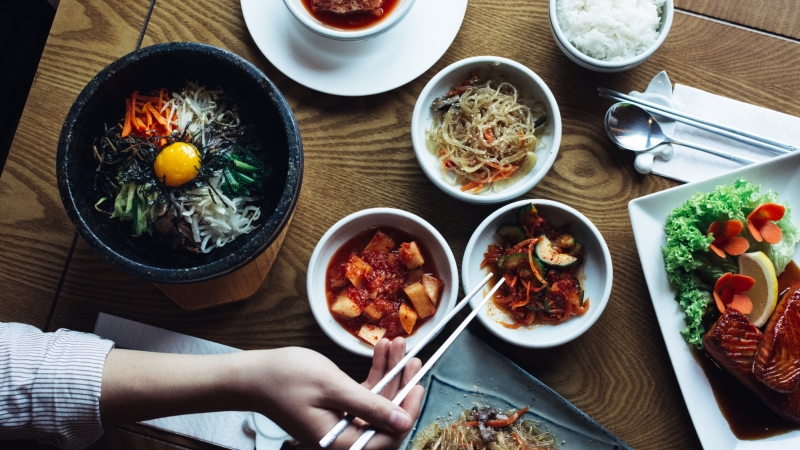Plov is considered the national dish of Uzbekistan. The almost authentic lamb and rice dish is a prominent representative of the Central Asian feast, easy to make and delicious.
Cultural stories in every grain of rice
Plov (плов) is arguably the national dish of Uzbekistan. Uzbeks have many reasons to eat plov, including weddings, funerals, births, and Navruz (Persian New Year), which calls for a dish of dill-scented rice, tender meatballs, topped with melted onions and spiced carrots. For some locals, plov is even a regular weeknight meal.
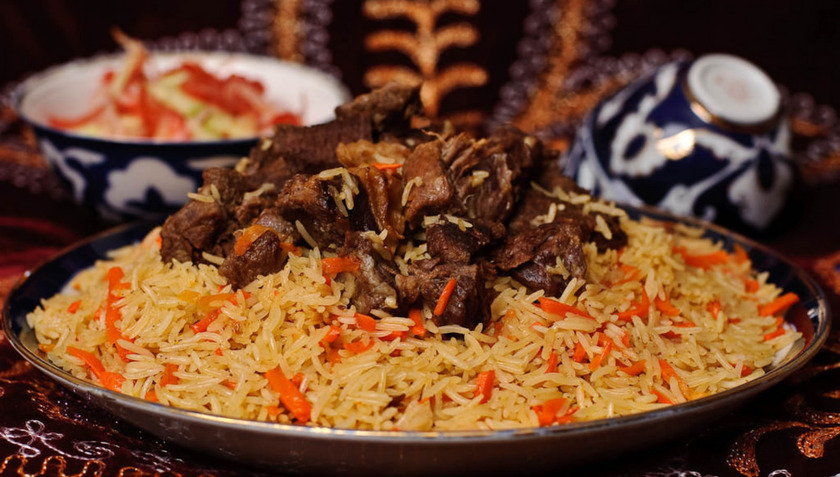
Plov, an Uzbek heritage rice pilaf
There is an old Uzbek proverb that goes like this: “If you are rich, eat plov; if you are poor, eat plov.” That proves its popularity and love. When the steaming rice balls are served on the table with the aroma of Egyptian cumin and garlic, it seems that every tourist in Uzbekistan has an irresistible craving. Each bite of enjoying the succulent meat, carrots, cranberries and chickpeas glistening between the rice is a sign of an unforgettable trip.
Every grain of plov carries the flavour of the land, its glorious history and the stories passed down from generation to generation. Preparing and enjoying plov has become a ritual, a way for Uzbeks to connect with the past, with their ancestors and with each other.
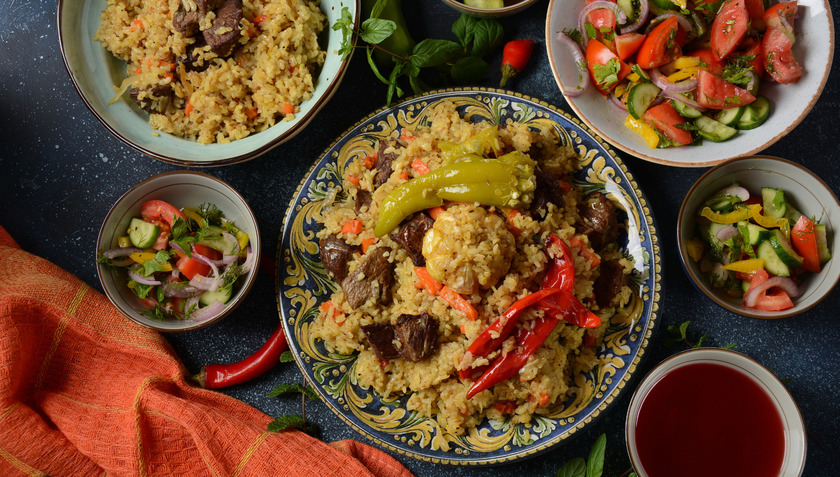
Uzbekistan was part of the legendary Silk Road. Thousands of years of trade have given Uzbek cuisine its rich diversity.
According to recorded documents, Plov appeared in Uzbekistan possibly from the 10th or 11th century. At this time, this was a dish served to the aristocracy because only the wealthy could afford to prepare Plov, while for common people, this dish occasionally appeared on important annual holidays.
The story of plov dates back to the time of Alexander the Great, when he and his troops conquered new lands, and it is said that this dish was invented to meet the high nutritional needs and easy preparation of soldiers. Although there are no specific historical documents to prove this, plov did become an indispensable part of life for the people of Central Asia in the 9th and 10th centuries.
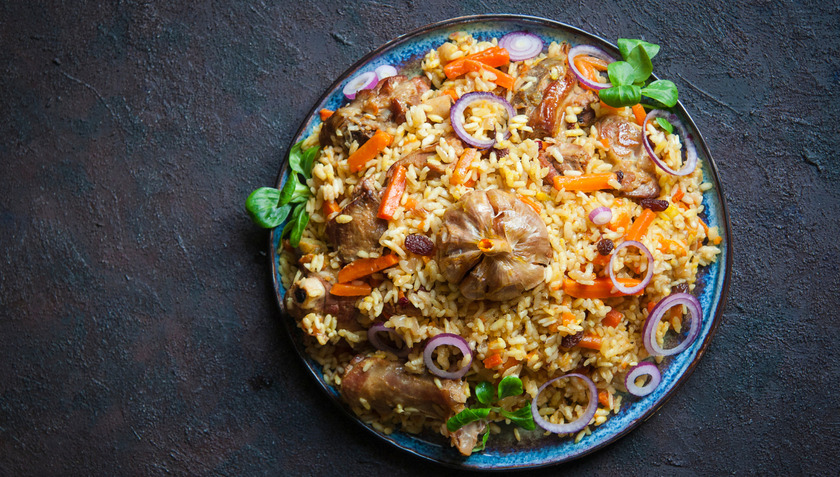
Before becoming a national dish, only the rich and noble people in Uzbekistan had the opportunity to enjoy Plov.
Symphony of spices on the tip of the tongue
If you ask any Uzbek person what food you must try here, or what food reminds them of when they are away from home, the answer will always be “plov!”. The ingredients in plov are not too many, including: long grain rice, yellow carrots, onions, lamb cooked in lamb fat, vegetable oil. Depending on the region, the list of ingredients can be longer, including chickpeas and raisins. According to statistics, there are more than 60 plov recipes in Uzbekistan.
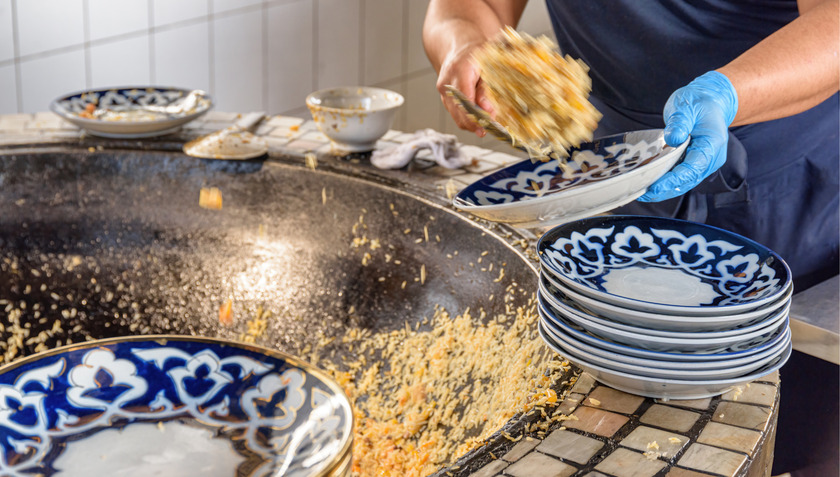
With just rice, meat and vegetables, you can make this dish.
Plov is essentially a dish made from rice, beef or lamb, oil or animal fat, carrots (usually cut into matchsticks) and onions, cooked with dill and salt in a large pot. In some places, people even replace the rice with buckwheat, wheat, green beans or vermicelli. In addition, to increase the attractiveness, some regions also add roasted garlic on top.
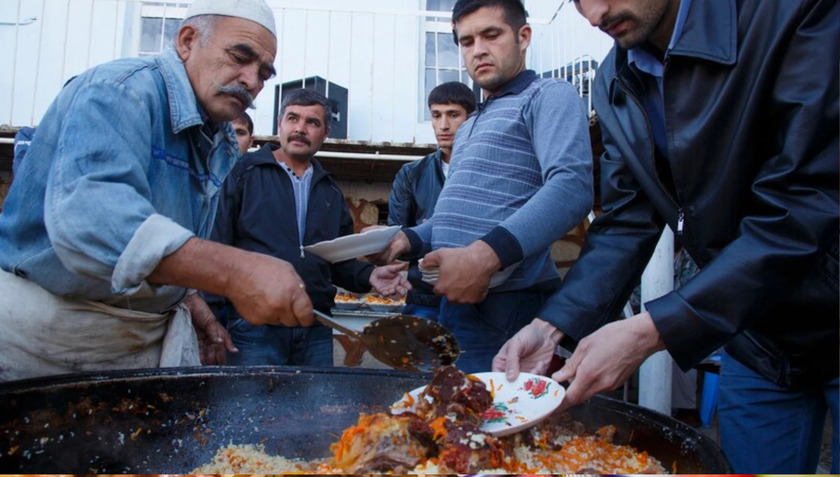
In Uzbekistan, you can find at least 60 Plov recipes, depending on the habits and ingredients of each region.
In the ideal Uzbek plov, the grains of rice should be separate, intact, and not stuck together. The rice should be soft yet firm, meaning a good plov should be neither mushy and sticky like porridge, nor thick like risotto. To put this in perspective, the closest equivalent to plov in European cuisine is probably paella.

Although commonly known as a “rice dish”, many people substitute rice with mung beans, wheat, vermicelli or buckwheat… when making Plov.
Plov is usually and should also be quite oily, with a film of oil remaining on the plate after eating. The meat used for plov should be tender lamb. The carrots should be large, tender, sweet pieces that have caramelized during cooking. Overall, plov should have a good balance of salty/lamb, salty, oily, cumin, and sweet (onion, carrot) flavors.
In fact, it is considered a delicacy in the minds of many Central Asians. It is especially the national dish of Uzbekistan, which succeeded in getting plov listed as an Intangible Cultural Heritage of Humanity by UNESCO in 2016. In addition, many neighboring countries such as Azerbaijan, Kazakhstan and Tajikistan also consider plov to be one of their main dishes.
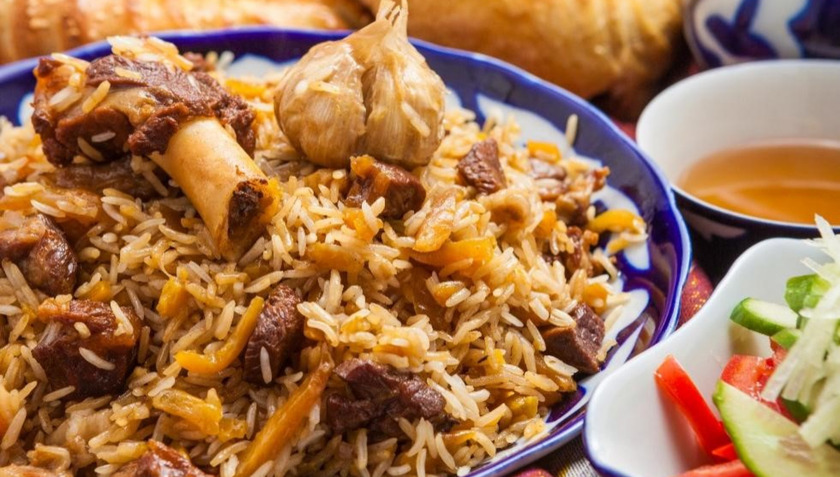
Plov is also served with salad or pickles to "prevent boredom".
Plov, the traditional rice dish of Uzbekistan, is not only a culinary masterpiece but also an indispensable part of the spiritual and cultural life of the people here. Over thousands of years, plov has become a symbol of abundance, happiness and luck. Every time people enjoy plov, they feel like they are returning to their roots, feeling the warmth of family and love for their homeland. At the same time, plov is also a bridge for generations to communicate, exchange and preserve traditional cultural values.





